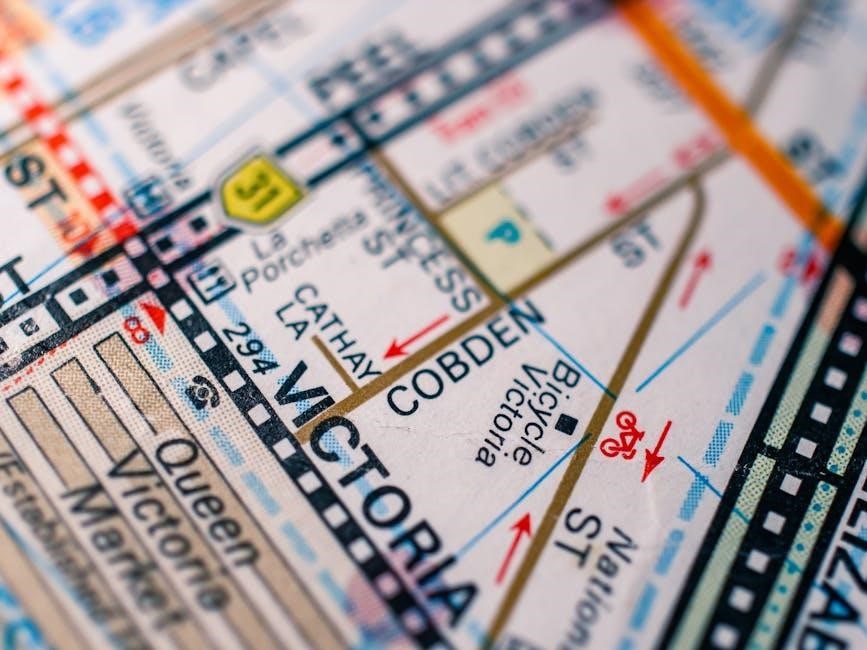Car detailing is a comprehensive process that transforms vehicles by enhancing their appearance and protecting surfaces. It involves thorough cleaning‚ decontamination‚ and protection of both exterior and interior‚ ensuring a showroom finish and long-term preservation of the car’s condition.
What is Car Detailing?
Car detailing is a meticulous process aimed at restoring and enhancing a vehicle’s appearance through thorough cleaning‚ protection‚ and restoration of both exterior and interior surfaces. It involves techniques such as washing‚ decontamination‚ paint correction‚ and applying protective layers like ceramic coatings or wax for the exterior. Interior detailing focuses on cleaning surfaces‚ carpets‚ upholstery‚ and conditioning leather to maintain its quality. Whether done at home using DIY guides or by professionals‚ detailing is essential for preserving a car’s condition and value‚ ensuring it looks its best while protecting it from environmental damage. This process requires patience and the right techniques to achieve optimal results.
Why is Car Detailing Important?

Car detailing is essential for maintaining a vehicle’s appearance‚ protecting its surfaces‚ and preserving its value. Regular detailing helps remove contaminants‚ prevent damage‚ and restore the car’s original shine. Exterior detailing protects paint and clear coats from environmental hazards like UV rays‚ tar‚ and dirt‚ while interior detailing ensures hygiene and extends the life of materials like leather and fabric. Proper detailing also enhances safety by improving visibility and reducing distractions from dirty or damaged surfaces. Additionally‚ a well-detailed car reflects better in resale value‚ as it demonstrates care and maintenance. By addressing both aesthetic and functional aspects‚ car detailing is a vital part of vehicle ownership‚ offering long-term benefits for the car’s condition and the owner’s satisfaction.

Exterior Detailing Guide
Exterior detailing transforms and protects your car’s appearance. It involves washing‚ decontamination‚ paint correction‚ and applying protection like ceramic coatings or wax. Regular detailing ensures a showroom finish and long-term surface protection.
Washing and Drying
Washing and drying are the first steps in exterior detailing‚ crucial for removing dirt and preparing the surface for further treatments. Use a mild car detergent‚ soft sponge‚ or microfiber towel to avoid scratching the paint. Start from the top‚ working your way down to prevent dirt from spreading. Rinse thoroughly to remove all soap residue. For drying‚ use a microfiber towel or chamois to prevent water spots. Avoid using household towels‚ as they can leave lint or scratches.
Proper washing and drying ensure a clean‚ smooth surface for subsequent detailing steps like decontamination and paint correction. Regular washing helps maintain the car’s appearance and prevents damage from contaminants. Always rinse and dry your car thoroughly to keep its exterior in prime condition.
Decontamination (Tar Remover‚ Clay Bar)
Decontamination is a critical step in exterior detailing‚ focusing on removing stubborn contaminants like tar‚ bugs‚ and overspray. Start by applying a tar remover to affected areas‚ allowing it to break down the sticky substances before rinsing off. For deeper cleaning‚ use a clay bar to remove embedded contaminants like metal particles and environmental fallout. Knead the clay bar to ensure even distribution and glide it lightly over the paint surface with a lubricating spray to avoid scratching. This process leaves the paint feeling smooth and clean. Regular decontamination prevents long-term damage and ensures better results from subsequent detailing steps like paint correction. It’s essential for maintaining a car’s exterior health and appearance.
Paint Correction
Paint correction is a detailed process aimed at restoring a vehicle’s paintwork to its original condition by addressing imperfections such as scratches‚ swirl marks‚ and oxidation. It involves a combination of polishing and refining techniques to create a smooth‚ glossy finish. The process begins with an assessment to identify the type and depth of defects. Depending on the severity‚ different grades of polishes and buffing pads are used to gently remove imperfections without damaging the paint. For deeper scratches‚ a dual-action or rotary polisher may be employed‚ while lighter defects can be addressed with hand polishing. It’s crucial to work carefully to avoid over-polishing‚ which can thin the paint. After correction‚ the surface is inspected under bright lighting to ensure all flaws have been addressed. Paint correction not only enhances the car’s appearance but also prepares it for protection methods like waxing or ceramic coating‚ ensuring a durable and showroom-quality finish.
Paint Protection (Ceramic Coating‚ Waxing)
Paint protection is the final step in exterior detailing‚ designed to safeguard the vehicle’s paintwork from environmental damage and maintain its glossy appearance. Ceramic coating and waxing are the most popular methods. Ceramic coating forms a durable‚ hydrophobic barrier that repels water‚ contaminants‚ and UV rays‚ offering long-term protection against oxidation and fading. It’s more resilient than traditional wax and requires less maintenance. Waxing‚ on the other hand‚ provides a classic‚ deep shine and acts as a sacrificial layer to protect the paint from minor scratches and harmful elements. Both methods are applied after paint correction to ensure a smooth‚ even surface; Regular touch-ups are essential to maintain their effectiveness. While ceramic coatings last longer‚ waxing is easier to apply and provides immediate results. Proper preparation‚ including decontamination and polishing‚ ensures optimal adhesion and performance of these protective layers‚ enhancing both the car’s appearance and its paint’s durability over time.

Interior Detailing Guide
Interior detailing focuses on deep cleaning‚ organizing‚ and protecting the car’s cabin. It involves vacuuming‚ cleaning surfaces‚ and conditioning materials like leather or fabric. Regular maintenance ensures a fresh‚ hygienic‚ and visually appealing interior environment for drivers and passengers.
Cleaning Interior Surfaces
Cleaning interior surfaces is the foundation of any detailing process. Start by removing loose debris with a vacuum cleaner‚ paying special attention to crevices and tight spaces. Use a microfiber cloth to wipe down dashboards‚ doors‚ and consoles‚ ensuring a gentle yet thorough clean. For tougher stains or spills‚ apply a mild cleaning product specifically designed for automotive interiors. Avoid harsh chemicals that could damage materials like plastics‚ leather‚ or vinyl.
For electronics and sensitive areas‚ use a damp microfiber cloth or a dedicated screen cleaner to avoid streaks or damage. Pay attention to high-touch areas such as the steering wheel‚ gearshift‚ and door handles‚ as these often harbor dirt and germs. Regular cleaning prevents the buildup of grime and maintains a fresh‚ hygienic interior environment.
Carpet and Upholstery Cleaning
Carpet and upholstery cleaning is a vital step in detailing‚ focusing on deep cleaning fabrics and surfaces. Start by vacuuming thoroughly‚ paying attention to crevices‚ seats‚ and floor mats. For stains or spills‚ use a fabric cleaner or upholstery shampoo‚ gently agitating with a soft-bristle brush. Avoid soaking the material to prevent damage or mold growth.
For tougher stains‚ apply a stain remover and let it sit before rinsing with a clean‚ damp cloth. For carpets‚ use a carpet extractor or steam cleaner to remove embedded dirt. Allow all surfaces to air dry completely to prevent moisture buildup. Regular cleaning maintains the appearance and longevity of your car’s interior‚ ensuring a fresh and clean environment for drivers and passengers.
Leather Conditioning
Leather conditioning is essential for maintaining the health and appearance of your car’s leather surfaces. Over time‚ leather can dry out‚ crack‚ or fade due to sunlight‚ dirt‚ and regular use. Conditioning restores moisture‚ softness‚ and protection to the leather‚ ensuring it remains supple and luxurious.
Start by cleaning the leather thoroughly with a gentle leather cleaner to remove dirt‚ oils‚ or residue. Once clean‚ apply a high-quality leather conditioner or leather oil using a soft‚ clean cloth. Work in circular motions to evenly distribute the product‚ paying attention to high-wear areas like seats and armrests. Allow the conditioner to absorbs fully before using the vehicle. Regular conditioning prevents cracking‚ protects against UV damage‚ and maintains the leather’s natural shine. Avoid using harsh chemicals or excessive water‚ as these can damage the material. Properly conditioned leather not only enhances comfort but also preserves the interior’s overall aesthetic and value.
